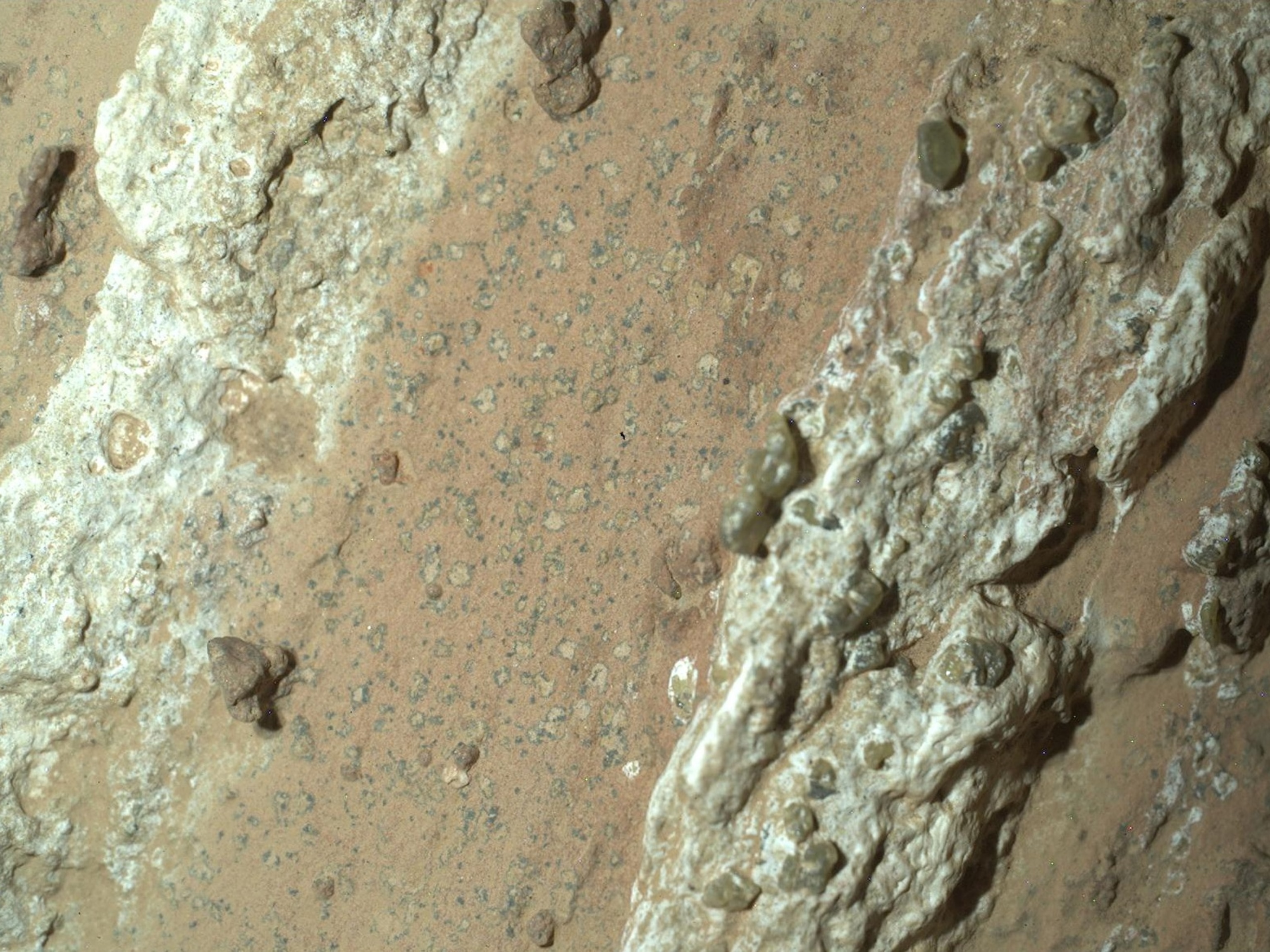A 350-billion-year-old rock discovered on the Red Planet is “the closest we’ve come to discovering ancient life on Mars,” according to NASA.
Potential signs of microbial life were found in a rock sample collected by the rover in 2024 from an ancient dry riverbed on Mars’ Jezero Crater — an area of rocky outcrops on the edges the Neretva Vallis, a river valley carved by water rushing to the canyon billions of years ago, NASA officials announced in a press conference on Wednesday.
The sample, named “Sapphire Canyon,” contains potential biosignatures, which are substances or structures that might have a biological origin, NASA said.
“It’s a signature. It’s a sort of leftover sign. It’s not life itself,” Nicky Fox, associate administrator of NASA’s Science Mission Directorate, said Wednesday. “It certainly could have been from ancient life, and that would have been something that was there billions of years ago.”
The finding is the closest astronomers have ever come to discovering life on Mars, Sean Duffy, acting NASA administrator, told reporters in Wednesday’s news conference.
“The identification of a potential biosignature on the Red Planet is a groundbreaking discovery, and one that will advance our understanding of Mars,” he said.

NASA’s Perseverance rover discovered leopard spots on a reddish rock nicknamed “Cheyava Falls” in Mars’ Jezero Crater in July 2024. Scientists think the spots may indicate that, billions of years ago, the chemical reactions in this rock could have supported microbial life; other explanations are being considered.
NASA
The sample was collected in 2024 from a rock named “Cheyava Falls.” The arrowhead-shaped rock measures about 3.2 feet by 2 feet and contains what appears to be colorful spots that could have been left behind by microbial life.
Fox said the leopard-spotted rock had never been seen before on the Martian surface. Using the rover’s organic chemical detector to analyze the spots, scientists at Caltech and the Jet Propulsion Laboratory (JPL) found iron, phosphorus and sulfur arranged in patterns consistent with minerals like vivianite (hydrated iron phosphate) and greigite (iron sulfide) that could have “potentially been made by ancient life.”
Higher-resolution images revealed a distinct pattern of minerals arranged into reaction fronts — or points of contact where chemical and physical reactions occur, according to NASA.
NASA said that vivianite is frequently found on Earth around decaying organic matter and in sediments and peat bogs. Greigite is produced by certain forms of microbial life on our planet.
“On Earth, these minerals are often byproducts of microbial metabolisms that are consuming organic matter and making these minerals as a result of those reactions,” said Joel Hurowitz, a planetary scientist at Stony Brook University, who is one of the experts involved in the project. “So what we need to do from here is to continue to do additional research in the laboratory settings here on Earth.”

NASA’s Perseverance Mars rover took this selfie, made up of 62 individual images, July 23, 2024. A rock nicknamed “Cheyava Falls,” which has features that may bear on the question of whether the Red Planet was long ago home to microscopic life, is to the left of the rover near the center of the image.
NASA
Hurowitz said that other non-organic reasons could explain the findings, but added that “The combination of chemical compounds we found in the Bright Angel formation could have been a rich source of energy for microbial metabolisms.”
The findings were released on Wednesday in a peer-reviewed scientific journal article published in Nature.
The formation’s sedimentary rocks are composed of clay and silt — materials that are “excellent preservers” of past microbial life on Earth, NASA said.
The discovery was “particularly surprising” because the sample was taken from the youngest sedimentary rocks the mission has investigated, contrary to an earlier hypothesis that assumed signs of ancient life would be confined to older rock formations, according to NASA.
NASA said the only way to confirm the findings is to return the sample to Earth. However, the Trump administration has recommended eliminating the funding for a program that would have returned Mars samples to Earth.
Lindsay Hays, senior scientist for Mars Exploration at NASA explained that this is a potential biosignature and that it could have a biological origin. She said more study is required.
Perseverance landed on Mars in February 2021 and has been studying the red planet’s Jazero Crater region ever since. It’s collected and analyzed 30 samples so far and has room for six more.
“NASA’s commitment to conducting Gold Standard Science will continue as we pursue our goal of putting American boots on Mars’ rocky soil,” Duffy said in a statement.









